History
According to a declaration in its inaugural issue, no doubt written by editor John Reed, "thousands of members" of the Left Wing Section living in New York City were engaged in "fighting for control of the local Party machinery, against a fierce and unscrupulous resistance by the petty politicians who direct the Party machine." While noting enormous contributions to this movement made by the long-established Left Wing weekly of the Left Wing Section of Local Boston, The Revolutionary Age, "as long as the entire machinery is not in our hands, a New York is essential," Reed declared. [1]
For the next 10 weeks, Reed's newspaper documented one of the most ferocious factional struggles in the history of the Socialist Party of America, a veritable war marked by arbitrary dissolutions of party units, lockouts from facilities, and takeovers of scheduled meetings. This blow-by-blow coverage which makes The New York Communist one of the most important primary sources for historians studying the process of formation of the American Communist movement during the tumultuous year of 1919.
According to historian James Weinstein:
Reed and his colleagues viewed the Socialist Party moderates as consistent supporters of 'liberal state capitalism' as a result of their commitment to parliamentarianism. Although they did not yet attack the old party leadership as prowar, they did tend to equate it with European social democracy, which, Reed wrote, was 'as responsible for the war as Wilhelm.' * * * While the Left Wing in New York, as throughout the United States, became more and more caught up with the insurrectionary perspective of the new Communist International, the old leadership of the Socialist Party reacted to the wartime repression and postwar antiradical hysteria by appealing to traditional American democratic rights and liberal values. Thus, at the same point in time, each wing exhibited one side of the polarity that has characterized the movement as a whole since World War I: in its revolutionary phase a resort to abstract revolutionary appeals; in its popular (defensive) stage a falling back on the dominant liberalism. [2]
Editor John Reed was assisted in his task by associate editor Eadmonn MacAlpine. Business manager of the publication at its launch was Maximilian Cohen, the Executive Secretary of the Left Wing Section of Local Greater New York. Cohen was succeeded in this role by Benjamin Gitlow effective with the June 14 issue. [3] Each issue of the paper consisted of 8 pages in each issue and bore a cover price of 5 cents per copy.
No sooner had the second edition of The New York Communist appeared when David P. Berenberg, a party regular affiliated with the Rand School of Social Science, launched a new factional document from the other side of the debate, mockingly entitled The New York Socialist. The publication adopted the jeering tone of Reed's publication and matched The New York Communist blow-for-blow in terms of personal invective, albeit concentrating its fire on the Left Wing insurgents as "an enemy ... within our ranks." [4]
This new rival proved to be too tempting a target for the sophomorish Reed to ignore. On May 17, The New York Socialist appeared as usual at the Rand School. It was not until several thousand issues had been distributed that it was discovered that the document being distributed was an exact replica of Berenberg's publication created by Reed and MacAlpine. The parody issue prominently featured a speech purported to have been delivered by leader of the Regular faction Louis Waldman on April Fool's Day. In this mock speech, Waldman portrayed as attacking the Left Wing with the words:
So evident is their intention to disrupt the party that it has been necessary to expel all Left Wing branches and exclude the members from any vote on party affairs. If this is not disrupting the party, what is? [5]
The complete run of The New York Communist was reprinted as an elephant folio book by the Greenwood Reprint Corporation of Westport, Connecticut in 1970 as part of their series "Radical Periodicals in the United States." A microfilm edition was also released by Greenwood at that same time.

Leninism is a political ideology developed by Russian Marxist revolutionary Vladimir Lenin that proposes the establishment of the dictatorship of the proletariat led by a revolutionary vanguard party as the political prelude to the establishment of communism. The function of the Leninist vanguard party is to provide the working classes with the political consciousness and revolutionary leadership necessary to depose capitalism in the Russian Empire (1721–1917). Leninist revolutionary leadership is based upon The Communist Manifesto (1848), identifying the communist party as "the most advanced and resolute section of the working class parties of every country; that section which pushes forward all others." As the vanguard party, the Bolsheviks viewed history through the theoretical framework of dialectical materialism, which sanctioned political commitment to the successful overthrow of capitalism, and then to instituting socialism; and, as the revolutionary national government, to realise the socio-economic transition by all means.

The Socialist Party of America (SPA) was a socialist political party in the United States formed in 1901 by a merger between the three-year-old Social Democratic Party of America and disaffected elements of the Socialist Labor Party of America who had split from the main organization in 1899.

Jay Lovestone was an American activist. He was at various times a member of the Socialist Party of America, a leader of the Communist Party USA, leader of a small oppositionist party, an anti-Communist and Central Intelligence Agency (CIA) helper, and foreign policy advisor to the leadership of the AFL–CIO and various unions within it.

The Communist Labor Party of America (CLPA) was one of the organizational predecessors of the Communist Party USA.

Charles Emil Ruthenberg was an American Marxist politician and a founder and head of the Communist Party USA (CPUSA).

The Socialist Propaganda League of America (SPLA) was established in 1915, apparently by C. W. Fitzgerald of Beverly, Massachusetts. The group was a membership organization established within the ranks of the Socialist Party of America (SPA) and is best remembered as direct lineal antecedent of the Left Wing Section of the SPA and its governing National Council — the forerunner of the American Communist movement. It published a journal, The Internationalist, renamed The New International in 1917, last published in 1919.
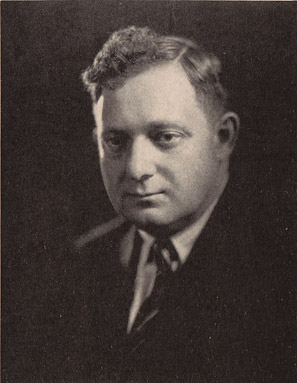
Benjamin Gitlow was a prominent American socialist politician of the early 20th century and a founding member of the Communist Party USA. During the end of the 1930s, Gitlow turned to conservatism and wrote two sensational exposés of American Communism, books which were very influential during the McCarthy period. Gitlow remained a leading anti-communist up to the time of his death.
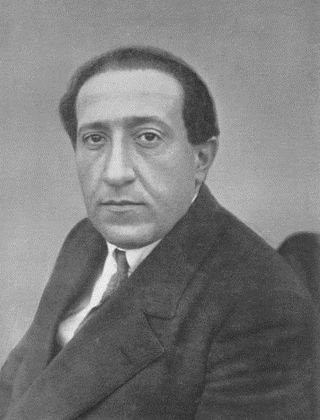
John Pepper, also known as József Pogány and Joseph Pogany, was a Hungarian Communist politician. He later served as a functionary in the Communist International (Comintern) in Moscow, before being cashiered in 1929. Later as an official in the Soviet government, Pepper ran afoul of the secret police and was executed during the Great Terror of 1937–38.
The Communist League of Struggle (CLS) was a small communist organization active in the United States during the 1930s. Founded by Albert Weisbord and his wife, Vera Buch, who were veterans of the Left Socialist movement and the Communist Party USA, the CLS briefly affiliated with Leon Trotsky independently of the Communist League of America. It was affiliated to the International Bureau of Revolutionary Youth Organizations until 1935. The small group dwindled and quietly was terminated in the spring of 1937.
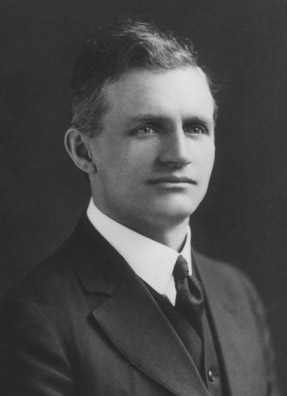
Alfred Wagenknecht was an American Marxist activist and political functionary. He is best remembered for having played a critical role in the establishment of the American Communist Party in 1919 as a leader of the Left Wing Section of the Socialist Party. Wagenknecht served as executive secretary of the Communist Labor Party of America and the United Communist Party of America in 1919 and 1920, respectively.

Louis C. Fraina was a founding member of the Communist Party USA in 1919. After running afoul of the Communist International in 1921 over the alleged misappropriation of funds, Fraina left the organized radical movement, emerging in 1926 as a left wing public intellectual by the name of Lewis Corey. During the McCarthy era, deportation proceedings were initiated against Fraina-Corey. After a protracted legal battle, Corey died of a cerebral hemorrhage before the action against him was formally abandoned.

The Lovestoneites, led by former General Secretary of the Communist Party USA (CPUSA) Jay Lovestone, were a small American oppositionist communist movement of the 1930s. The organization emerged from a factional fight in the CPUSA in 1929 and unsuccessfully sought to reintegrate with that organization for several years.

Maximilian "Max" Cohen was an American socialist politician of the early 20th century. Cohen held a series of important posts during the pivotal year of 1919, including Secretary of the Left Wing Section of the Socialist Party for Local Greater New York, Secretary of the Left Wing National Council, and business manager for the New York Communist. Cohen was also a founding member of the Communist Party of America in that same year.

The Militant faction was an organized grouping of Marxists in the Socialist Party of America (SPA) who sought to steer that organization from its orientation towards electoral politics and towards direct action and revolutionary socialism. The faction emerged during 1930 and 1931 and achieved practical control of the organization in 1934. The existence of the "Militants" and the threat they represented to the political line of the SPA caused traditional electorally oriented members to form an organized grouping of their own, known as the "Old Guard faction." In 1935 the personal and political friction between these two basic tendencies lead to an organizational split, with the Old Guard faction leaving to establish the Social Democratic Federation (SDF). The Militant faction itself shattered in the aftermath of the 1935 party split with only a small core loyal to perennial Presidential candidate Norman Thomas remaining in the organization by the coming of World War II.
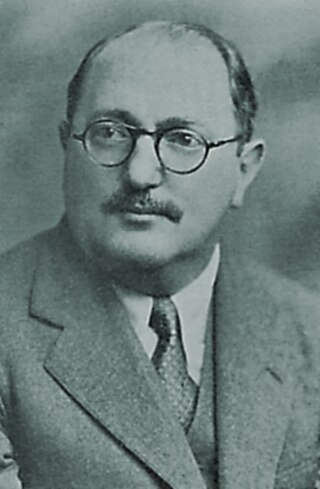
David Paul Berenberg was an American socialist teacher, editor, and writer. He is best remembered as a founder and editor of The American Socialist Quarterly, the theoretical magazine of the Socialist Party of America (SPA) during the 1930s.

The Class Struggle was a bi-monthly Marxist theoretical magazine published in New York City by the Socialist Publication Society. The SPS also published a series of pamphlets, mostly reprints from the magazine during the short period of its existence. Among the initial editors of the publication were Ludwig Lore, Marxist theoreticians Louis B. Boudin and Louis C. Fraina, the former of whom left the publication in 1918. In the third and final year of the periodical, The Class Struggle emerged as one of the primary English-language voices of the left wing factions within the American Socialist Party and its final issue was published in 1919 by the nascent Communist Labor Party of America.

The Communist Party USA has held thirty official conventions including nomination conventions and conventions held while the party was known as the Workers Party of America, the Workers (Communist) Party of America and the Communist Political Association. There were also a number of congresses held by the earlier organizational predecessors of the party, including the Communist Labor Party of America, the United Communist Party and two groups known as the Communist Party of America. The Communist Party's 30th National Convention took place on 13 to 15 June 2014 in Chicago.

The Revolutionary Age was an American radical newspaper edited by Louis C. Fraina and published from November 1918 until August 1919. Originally the publication of Local Boston, Socialist Party, the paper evolved into the de facto national organ of the Left Wing Section of the Socialist Party which battled for control of the Socialist Party throughout the spring and summer of 1919. With the establishment of the Left Wing National Council in June 1919, the paper was moved from Boston to New York City gained status as the official voice of the nascent American communist movement. The publication was terminated in August 1919, replaced by the official organ of the new Communist Party of America, a weekly newspaper known as The Communist.
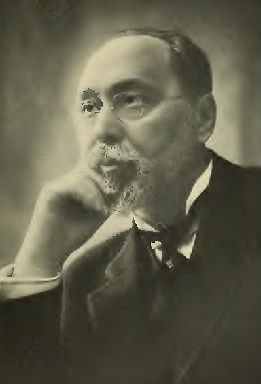
Isaac Aronovich Hourwich was a Jewish-American economist, statistician, lawyer, and political activist. Hourwich is best remembered as a pioneer in the development of labor statistics for the American mining industry and as a prominent public intellectual among the Yiddish-language community in the United States.
The Revolutionary Policy Committee (RPC) was an offshoot of the so-called "Militant" faction in the Socialist Party of America during the middle-1930s. The group sought to transform the SP into a revolutionary socialist organization from its origins as a social democratic political party.


















